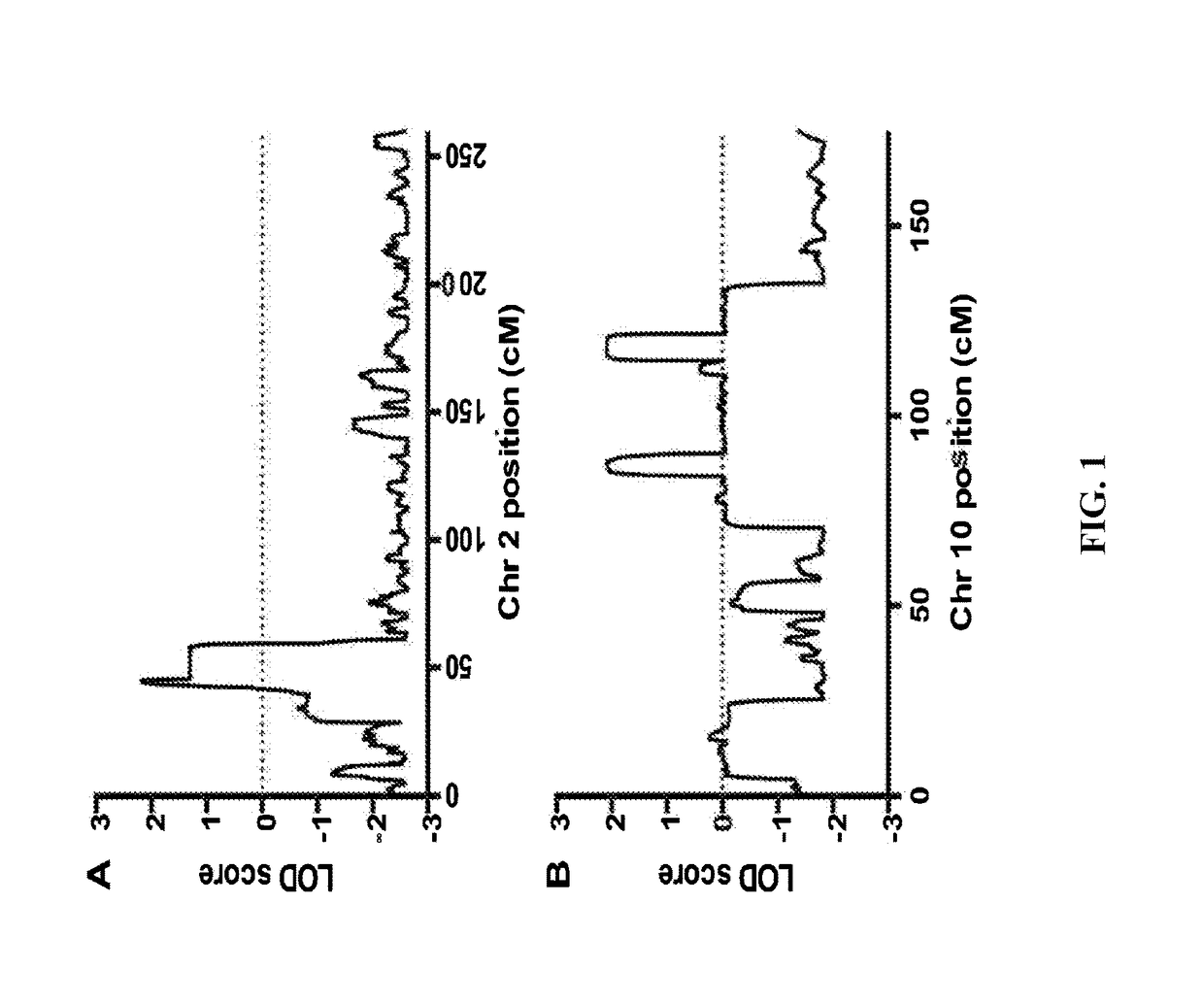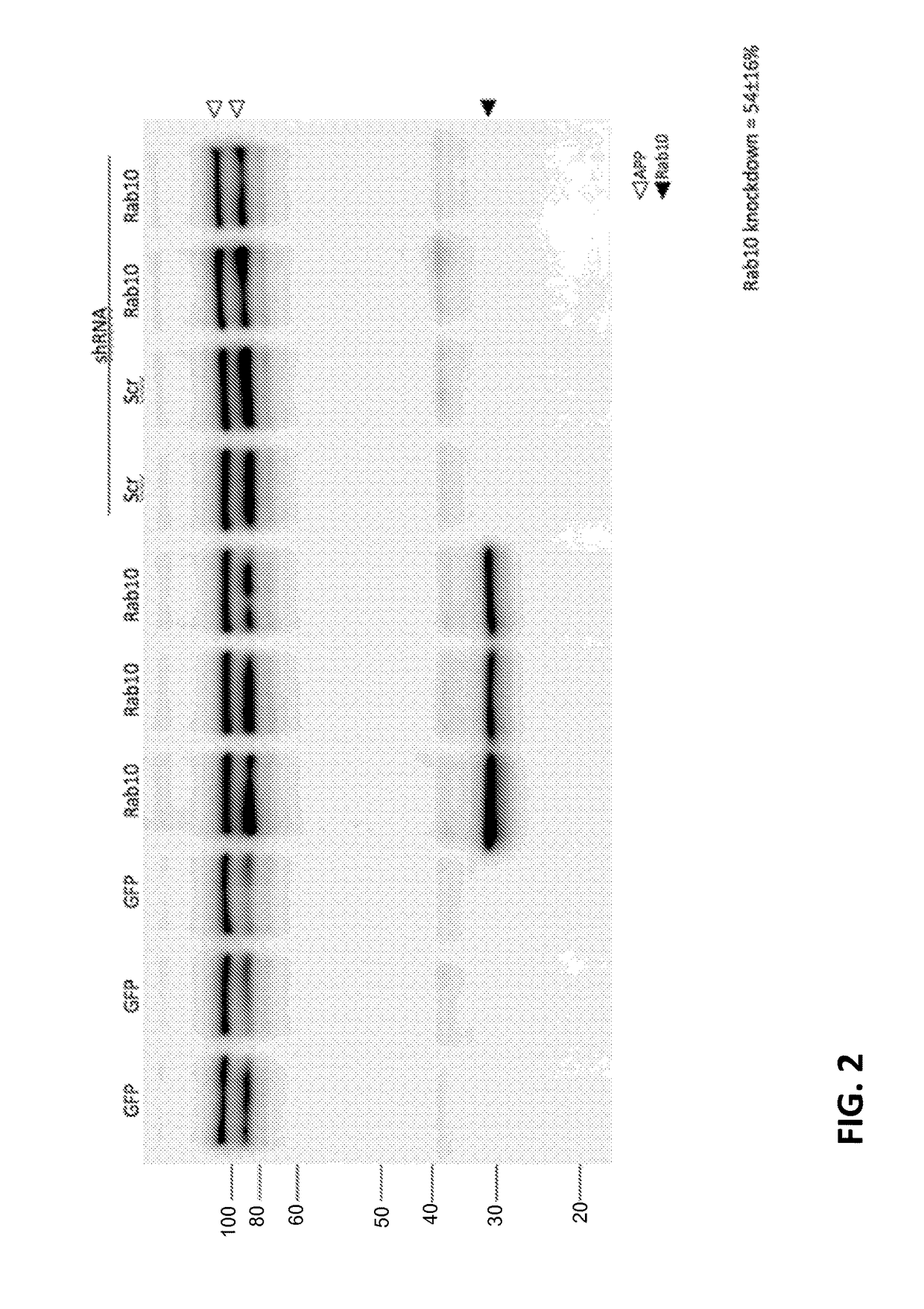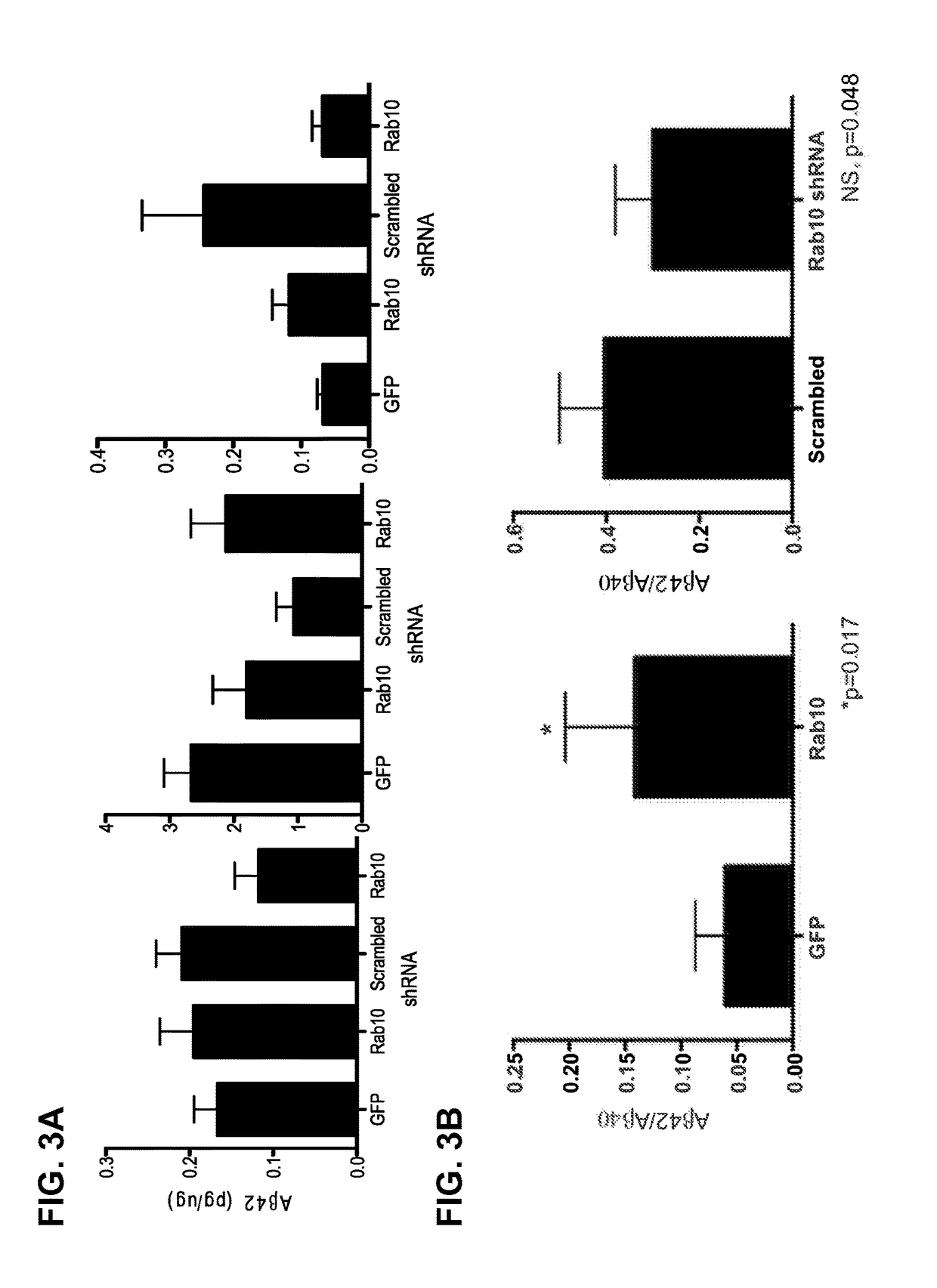Allelic polymorphisms associated with reduced risk for alzheimer's disease
a technology of alzheimer's disease and alleles, applied in the field of alzheimer's disease risk determination, can solve the problems of affecting the emotional and financial burden of those affected and their caretakers, the inability to effectively prevent or cure alzheimer's disease, and the predicted double of the number of affected individuals
- Summary
- Abstract
- Description
- Claims
- Application Information
AI Technical Summary
Benefits of technology
Problems solved by technology
Method used
Image
Examples
example 1
Methods
Linkage Samples
[0061]The control population for linkage analysis consists of APOE ε4 carriers over age 75 who remain non-demented after clinical assessment was identified from the Cache County Study. The Cache County Study was initiated in 1994 to investigate the association of APOE genotype and environmental exposures on cognitive function and dementia. This cohort of 5,092 Cache County, Utah, residents (90% of those aged 65 or older), has been followed continually for over 15 years, with four triennial waves of data collection and additional clinical assessments for those at high-risk for dementia. DNA samples were obtained from 97.6% of participants. The Cache County population is exceptionally long-lived and ranked number one in life expectancy among all counties in the 1990 U.S. Census (Murray et al., 1998). All members of the Cache County Study have been linked to the Utah Population Database (UPDB) and their extended genealogies are known. This population was the sourc...
example 2
[0082]Differential expression of RAB10 changes the Aβ42 / Aβ40 ratio and influences Aβ42 production.
[0083]Methods
[0084]Plasmids
[0085]The plasmids used for this study were the following: pCMV6-Rab10 (Origene # RC201464) for the overexpression experiments and pGFP-V-RS-Rab10 shRNA (Origene #TG501823). Four shRNA versions per gene were tested to obtain greater knockdown levels.
[0086]Cell Culture
[0087]Mouse neuroblastoma cells (N2A / APP695) expressing human APP-695 isoform were kindly given by Celeste Karch, Ph.D. N2A / APP695 are a mouse neuroblastoma line that express human APP695 isoform and is commonly used in functional APP studies (Thinakaran, Teplow et al. 1996, Rajendran, Honsho et al. 2006, Wang et al. 2006). N2A / APP695 cells were plated and grown in Dulbecco's modified eagle medium (DMEM) and Opti-MEM (1:1) supplemented with 1% L-glutamine, 5% FBS and 1% anti-mycotic solution. Cells were grown between 80% to 90% confluence for posterior analyses. Upon confluency, cells were transie...
PUM
 Login to View More
Login to View More Abstract
Description
Claims
Application Information
 Login to View More
Login to View More - R&D
- Intellectual Property
- Life Sciences
- Materials
- Tech Scout
- Unparalleled Data Quality
- Higher Quality Content
- 60% Fewer Hallucinations
Browse by: Latest US Patents, China's latest patents, Technical Efficacy Thesaurus, Application Domain, Technology Topic, Popular Technical Reports.
© 2025 PatSnap. All rights reserved.Legal|Privacy policy|Modern Slavery Act Transparency Statement|Sitemap|About US| Contact US: help@patsnap.com



